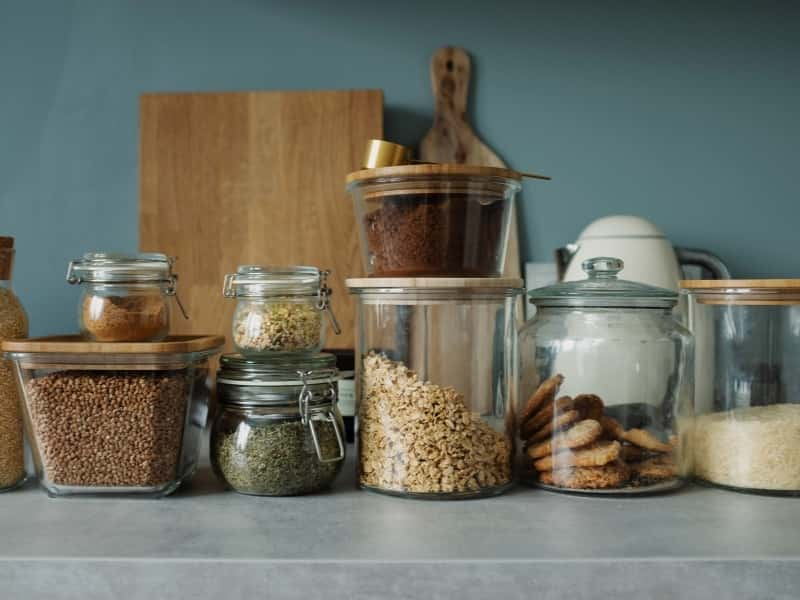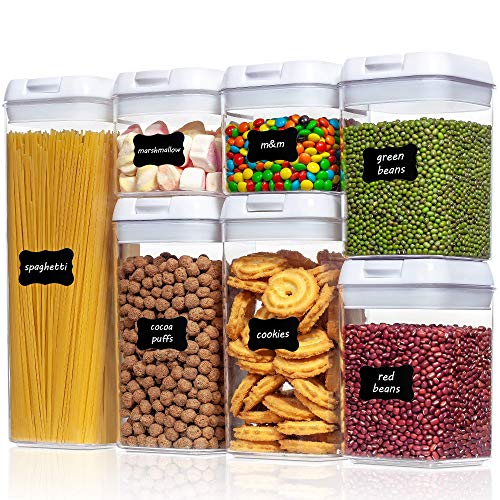It’s a little sad fact that many people out there lack the knowledge about food storage and they store food on the floor. As a result, food contamination due to pests and dirt is occurring.
And therefore, discussion over the distance between floor and food storage among people has become a hot topic. So, it’s obvious for you to care for knowing exactly how far above the food should be stored. Thence, let’s not make any more delays and learn the exact answer.
How Far Above The Floor Should Food Be Stored?
Any kind of food and groceries should be stocked at least 6 inches above the floor in a dry storage space to prevent contamination by pests, bugs, and dirt. However, unopened foods that still are stored in their original bulky large-sized containers can be stored below 6 inches from the floor.
Table of Contents

What Is The Minimum Distance Required To Store Food Above The Floor?
The minimum distance required to store all types of food, supplies, and groceries is at least 6 inches above the ground in a dry area to avoid any cross-contamination, rodents, insects, bugs, and contamination by dirty floors.
Because when foods and other supplies are kept on the ground, they become very accessible to pests, rodents, bugs, and dirt to degrade the quality and nutrition.
So if foods, supplies, etc. are kept at 6 inches height at least, these pests, rodents, and others can’t reach that height so the food items remain safe.
Besides, such a height allows to clean beneath the shelves easily too.
However, in some cases where the food items and supplies are unopened and are stored in their original store-bought large containers, those can be stored below 6 inches off the floor.
How High Above The Floor Should Food Be Stored To Help Prevent Pests?
Food should be stored in such a dry place/shelve that is 6 inches high from the floor to prevent pests.
More if less each of us stores food items and other edible supplies at home but for the lack of proper storage, those foods can easily become susceptible to pests to strike.
Therefore, the FDA food court has instructed to store any food items six inches above the floor so that no pests can have the facility to adulterate any food items.
Why Should Food Not Be Stored On The Floor?
Here the exact reasons are explained that will make you comprehend why you never should store food on the floor.
Easy Accessible To Pests:
The major reason behind why no one should store food on the floor is, pests get easy access to the food items to contaminate them.
Generally, pests are harmful to human health as they spread diseases and contaminate foods. So regardless of how careful you are when you are storing foods on the floor, pests will infest them and will spread the bacteria they are carrying in the food.
As a result, the food items are not only contaminated but also can become poisonous, and eating them mistakenly can risk the life as well. So it’s suggested not to store food on the floor.
Difficult To Clean:
When you are storing food on the floor, it’s become troublesome to clean the floor and it’s another reason why food shouldn’t be stored on the floor.
At any home, the floor is vacuumed and mopped, so when food items are directly stored on the floor while vacuuming or washing the floor, one has to lift the containers or foods again and again to clean those areas.
And it’s really troublesome and can become difficult if the food containers or foods are heavy. So for easy cleaning purposes, food shouldn’t be stored on the floor.
Makes Food Rotten:
While storing food (especially for dry storage), it’s always recommended to store them in a dry and cool place. But storing foods on the floor can make them rot as sunlight directly can fall upon the floor and make the place warm which can make foods rot.
Or else, due to an increase in humidity the floor can moisten itself, therefore, the foods can rot too. Thence, no one should store food on the floor.
Dirty Floor:
No matter how much you can the floor, there are always unseen bacteria and dirt. So when you are storing food on the floor, especially fruits, veggies, there’s a high chance that it will get spoiled due to dirt on the floor or bacteria.
Therefore, storing food on the food should be avoided.
How Should Food And Supplies Be Stored In A Dry Storage Area?
Therefore, the ways of storing food items in a dry storage area have been described and listed below.
Store Foods Above The Floor:
All food items such as grains, cereals, canned foods, making support, etc. must be stored 6 inches off the floor in a dry storage area. So that any kind of pests can’t contaminate or harm the food items.
Keep The Temperature And Humidity Stable:
While storing foods in a dry storage area it’s a must to keep the area dry and cool, therefore, keeping the temperature and humidity at a stable level is highly required.
The temperature of a dry storage area should be between 50°F-70°F (10°C-21°C) to maximize the shelf life of foods. And the humidity of the dry storage must be no higher than 50-55% of humidity so that food quality remains high for a longer period.
Provide Ventilation:
To prevent the development of bacteria and mold in food items, providing good ventilation is highly required. So store foods away from the walls and off the ground to allow enough air circulation.
Keep Away From Direct Heat And Light:
While storing foods in the dry storage area, keep the food items and shelves away from any sources of direct light and heat to expand the life of shelves and foods.
Store Food In Original Packaging:
Try to store all food items in their original market-bought packaging inside the storeroom.
Store In Air Tight Containers:
Food items that are already opened must be stored in airtight, non-toxic, and pest-proof containers while storing in a dry storage area. Also, the containers should be accurately labeled and dated to know when it’s transferred.
Keep The Area Organized:
It’s highly essential to keep the dry storage area organized and most cleaned so that it becomes easier to find any food items at the time of need.
Therefore, all cans, boxes, and packets should be labeled with a proper description and dates of production and expiry. So that food items can be used before they expire and there will not be any waste.
Which Of The Areas Are Prohibited For Storing Food?
The prohibited areas for storing foods are- inside a locker room, in the toilet room, in the garbage room, under not shielded sewer lines, under open stairways, in mechanical rooms, and under leaking water lines and fire sprinkler heads.
What Are The 3 Types Of Food Storage?
Dry storage, refrigerators, and freezers are the three main types of food storage. Below all three types are briefly described.
Dry Storage:
Food items that can be used, preserved, and stored at room temperature are the ones that can be dry stored at home’s kitchen or restaurant’s dry storage areas.
Basically, all types of grains, cereal, voices and herbs, veggies such as potato, onion, garlic, bread, biscuits, can be dry stored.
Refrigerator:
Refrigerator is used as food storage when certain food items require to be stored as chilled to prevent rot, food quality degradation and maintain freshness.
Leftover foods, different types of sauces, pickles, eggs, veggies and fruits, butter, etc. are stored in refrigerators. The temperature in the refrigerator should be 39° F and should not go below 34° F.
Freezer:
Freezer is used as storage mainly to freeze meats and fish to prevent deterioration and fruits such as berries to enjoy them later. The temperature in the freezer should be below 0°F.
What Happens When Food Isn’t Stored Properly?
When food isn’t stored properly, it can be contaminated with bacteria and germs spread by pests.
Besides, you won’t be able to these food pointing bacteria as the food will appear, smell, and taste normal but it actually isn’t. And you can be affected by a stomach ache, vomiting, or more serious health issues.
How Far Above The Floor Should Clean Utensils Be Stored At A Minimum?
Clean utensils should be stored at a minimum of 6 inches high above the floor in a dry and clean place to prevent getting dirty by dust, splash, and other different ways of contamination.
Final Thoughts:
Food items always should be stored at a minimum of 6 inches high off the floor in a well-ventilated, clean, dry, and cool area to avoid contamination by any kind of pests and insects. But sometimes foods that are still unopened and are in original containers can be stocked under 6” from the ground.




